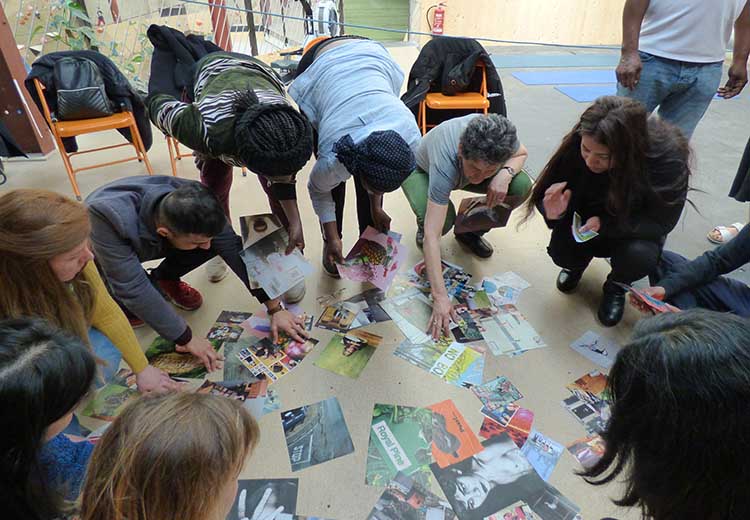University partnerships and the right kind of collaboration

A better tomorrow – why it depends on university partnerships
By Professor Andrew Livingston, VP Research and Innovation, Queen Mary University of London
Universities don’t just exist to teach. They’re here to build a better society. And that comes through innovation. Those genuine breakthrough moments when perspectives change, and new possibilities unfold.
Innovation is often thought of as being about “light bulb moments” – sudden epiphanies that change the world. Yet there’s more to it than that. It relies on an underlying process and structure and, crucially, partnerships. Collaboration – whether with other educational institutions, business, charities, or local communities – is so important because the problems we’re attempting to solve are complex, and we don’t have all the answers.
What gives a partnership the best chance of success? At Queen Mary, our relationships with different organisations have been important in helping us deliver impactful research outcomes. And if I were to highlight three key characteristics, they would be a shared understanding, adaptability, and an openness to exchanging value.
A shared understanding
University partnerships rely on a shared understanding of the project’s core objectives and the knowledge, tools and resources required to make them a success. That may sound obvious, but partnership projects are often layered and complex, developing and changing over time. Keeping an open dialogue focused on the shared understanding of the project’s objectives has proven crucial to our collective success.
Take, for example, the success of our partnership with innovative health tech start-up Living With. The idea was to use the health data collected by Living With’s remote monitoring app to help clinicians optimise rheumatoid arthritis (RA) patient treatments. Thanks to the efforts of both parties, we have been able to deliver a prototype AI-driven system that could revolutionise the treatment of RA and save the NHS millions of pounds every year.
After clearly establishing, over the course of two years, how both parties could contribute to the project’s objectives, this prototype won funding which has enabled Living With to integrate the online prototype onto their existing platform. The prototype is now available to a number of NHS trusts and Living With are in advanced talks with a global pharmaceutical company with a view to licensing the product.
The work of Action on Salt, a prominent campaign group set up by a number of academics from across the country and based at Queen Mary, is another example of how a shared understanding can deliver innovation and impact. Established almost thirty years ago to raise awareness of the health impact of salt, the group has worked closely with leading charities such as the British Heart Foundation, Esmée Fairbairn Foundation, Big Lottery Fund, and the UK Medical Research Council to launch research initiatives and urge governments to either work with or force businesses to reduce salt in food.
The group has engendered a shared understanding of the dangers of salt intake across these different organisations, using this to secure research funding. This collaboration has also helped to drive awareness of Salt Awareness Week, with the charities’ support and endorsement crucial in Action on Salt helping to influence health policy across the world.
A shared sense of purpose is important in the business sphere, too. The most successful university/business collaborations, such as the Oxford/AstraZeneca Covid-19 vaccines, are the product of transparent and dynamic interactions, where all parties strive to understand each other and their respective strengths.
To help with this, Universities UK has established a Knowledge Exchange Concordat to foster greater collaboration between industry and the higher education sector. The Concordat contains important advice on engagement with partners, working transparently and ethically, establishing continuous improvement, and evaluating success. This can help to instil a culture in which university-business interactions can flourish.
It's clear that a shared understanding of research purposes is vital to successful partnerships. But that’s not all.
Adaptability and impact
Adaptability and impact: in our experience, these are two key characteristics of research partnerships that produce meaningful innovation.
The balance between an initial research briefing process – in which objectives are clearly defined – and achieving adaptability isn’t easy to strike. But it is possible.
Covid-19 has been the biggest disruptive force in generations. It represented a massive change for our Centre for Studies of Home – a research collaboration between Queen Mary, the Museum of the Home and local people – which has produced world-leading research on human conceptions of ‘home’ since 2011. All of a sudden, our homes became our whole worlds, turning ideas about domesticity upside down. Thanks to a people-centred, impact-focused approach, the Centre could react to the immediate societal changes and capture insights and analysis as the pandemic developed.
Stay Home Stories is an innovative project designed to understand how the pandemic has changed our concept of and relationship with our homes. From interviews with diverse communities across London and Liverpool, the research explored people’s experiences of being at home in the pandemic, in order to develop policy reports and recommendations for change. The study had important implications for understanding the experiences of ethnic minority groups in the two cities, and how inequalities can be better addressed.
By putting adaptability and impact at the heart of collaborative research efforts, universities can ensure that unforeseen developments can become opportunities rather than crises.
Openness to value exchange
We’ve found that our most successful partnerships have been a two-way process. Other organisations have provided us with knowledge, skills, and resources, but we’ve always strived to offer them access and expertise, too.
Take our partnership with PwC and the Institute of Chartered Accountants in England and Wales as an example. Together we have launched a “Flying Start” degree programme, which enables students to “earn while they learn” at Queen Mary. This gives our commercial partners access to top talent from diverse backgrounds, while we benefit from our association with top employers.
In the recent National Centre for Universities and Businesses report, only a few companies cited universities as important centres for innovation knowledge. The main reason given was a lack of information from higher education institutions about how parties can work together and what the benefits might be.
So, there’s a real opportunity for universities to ensure they are demonstrating value to their partners. If exchanges of value are clearly established, then universities are likely to find that collaborating organisations step up their investment in universities, creating more exciting opportunities for academics and students alike.
A shared journey
When partnerships are successful, they can deliver real change – not just for universities and collaborating organisations themselves, but for wider society, too.
They can help to produce meaningful innovation on a consistent basis – transforming higher education institutions into centres of constant creative energy and societal impact.
The future for the higher education sector could be bright, but it depends on collaboration. Progress can be a shared journey and not a fragmented one.
Working together to find those breakthroughs, we are able to change perspectives and build a better tomorrow.
